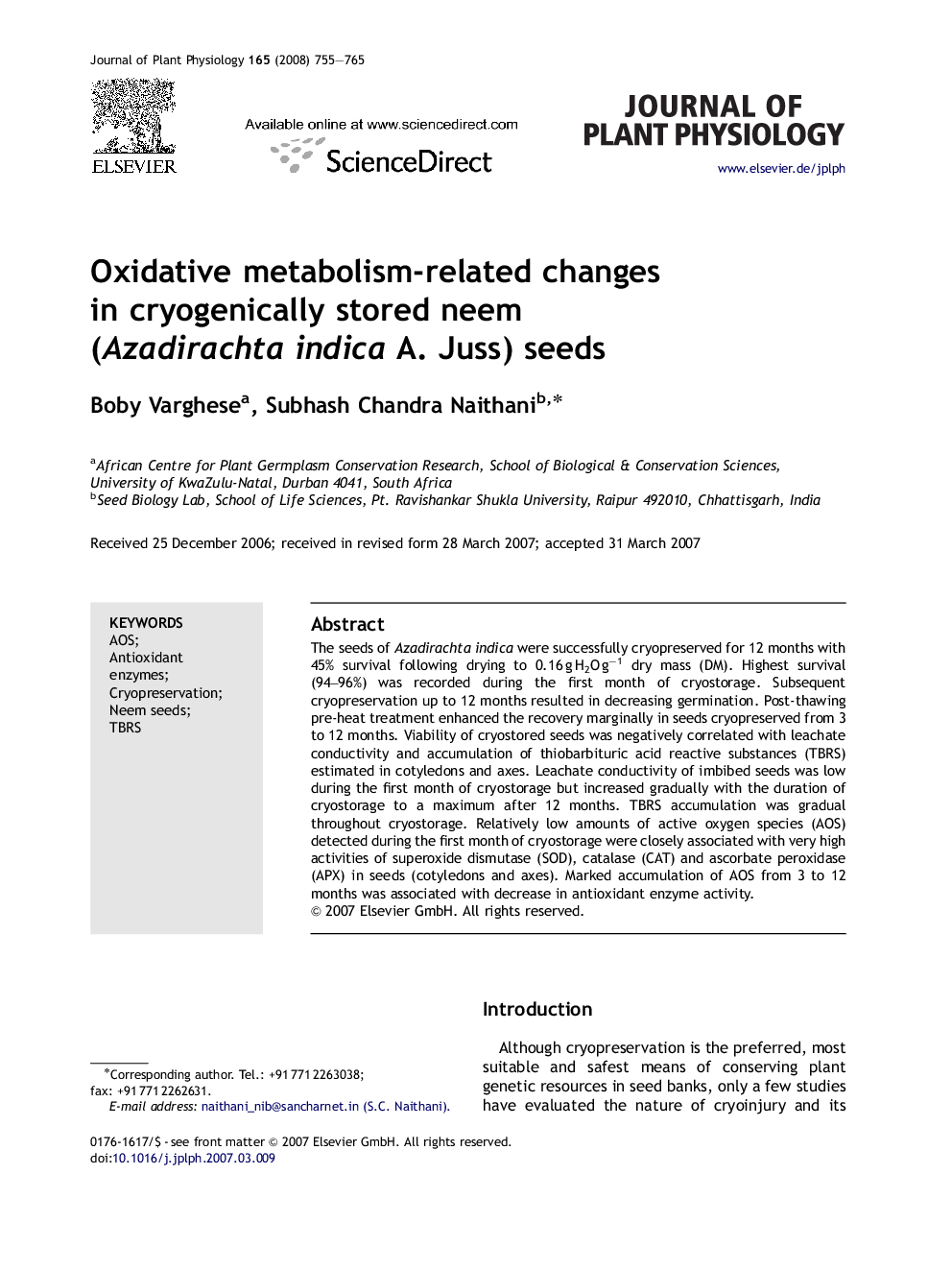| Article ID | Journal | Published Year | Pages | File Type |
|---|---|---|---|---|
| 2057586 | Journal of Plant Physiology | 2008 | 11 Pages |
The seeds of Azadirachta indica were successfully cryopreserved for 12 months with 45% survival following drying to 0.16 g H2O g−1 dry mass (DM). Highest survival (94–96%) was recorded during the first month of cryostorage. Subsequent cryopreservation up to 12 months resulted in decreasing germination. Post-thawing pre-heat treatment enhanced the recovery marginally in seeds cryopreserved from 3 to 12 months. Viability of cryostored seeds was negatively correlated with leachate conductivity and accumulation of thiobarbituric acid reactive substances (TBRS) estimated in cotyledons and axes. Leachate conductivity of imbibed seeds was low during the first month of cryostorage but increased gradually with the duration of cryostorage to a maximum after 12 months. TBRS accumulation was gradual throughout cryostorage. Relatively low amounts of active oxygen species (AOS) detected during the first month of cryostorage were closely associated with very high activities of superoxide dismutase (SOD), catalase (CAT) and ascorbate peroxidase (APX) in seeds (cotyledons and axes). Marked accumulation of AOS from 3 to 12 months was associated with decrease in antioxidant enzyme activity.
